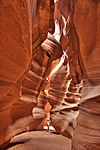File:Piles of Salt Salar de Uyuni Bolivia Luca Galuzzi 2006 a.jpg
Appearance

Size of this preview: 800 × 528 pixels. Other resolutions: 320 × 211 pixels | 640 × 422 pixels | 1,024 × 676 pixels | 1,280 × 845 pixels | 2,000 × 1,320 pixels.
Original file (2,000 × 1,320 pixels, file size: 892 KB, MIME type: image/jpeg)
File history
Click on a date/time to view the file as it appeared at that time.
| Date/Time | Thumbnail | Dimensions | User | Comment | |
|---|---|---|---|---|---|
| current | 07:30, 22 March 2007 |  | 2,000 × 1,320 (892 KB) | Trialsanderrors | {{Information |Description={{en|Piles of Salt on the Salar de Uyuni, Bolivia.}} {{it|Raccolta del sale nel Salar de Uyuni, Bolivia.}} |Source=Photo taken by (Luca Galuzzi) * http://www.galuzzi.it |Date=2006-04-14 |Aut |
File usage
The following page uses this file:
Global file usage
The following other wikis use this file:
- Usage on af.wikipedia.org
- Usage on ar.wikipedia.org
- سالار دو أويوني
- ملح الطعام
- ويكيبيديا:صور مختارة/أماكن/مناظر طبيعية
- تاريخ الملح
- ويكيبيديا:ترشيحات الصور المختارة/بحيرة ملحية
- ويكيبيديا:صورة اليوم المختارة/أبريل 2016
- قالب:صورة اليوم المختارة/2016-04-14
- بوابة:مطاعم وطعام/مقالة مختارة
- بوابة:مطاعم وطعام/مقالة مختارة/أرشيف
- بوابة:مطاعم وطعام/مقالة مختارة/2
- ويكيبيديا:صورة اليوم المختارة/يونيو 2017
- قالب:صورة اليوم المختارة/2017-06-25
- ويكيبيديا:صورة اليوم المختارة/يونيو 2019
- قالب:صورة اليوم المختارة/2019-06-05
- هندسة العمارة البوليفية
- ويكيبيديا:صورة اليوم المختارة/يناير 2022
- قالب:صورة اليوم المختارة/2022-01-12
- بحيرة جافة
- طعام الإنسان
- Usage on ast.wikipedia.org
- Usage on av.wikipedia.org
- Usage on ay.wikipedia.org
- Usage on ba.wikipedia.org
- Usage on be.wikipedia.org
- Usage on bn.wikipedia.org
- Usage on br.wikipedia.org
- Usage on ca.wikipedia.org
- Usage on ceb.wikipedia.org
- Usage on crh.wikipedia.org
- Usage on cs.wikipedia.org
View more global usage of this file.





